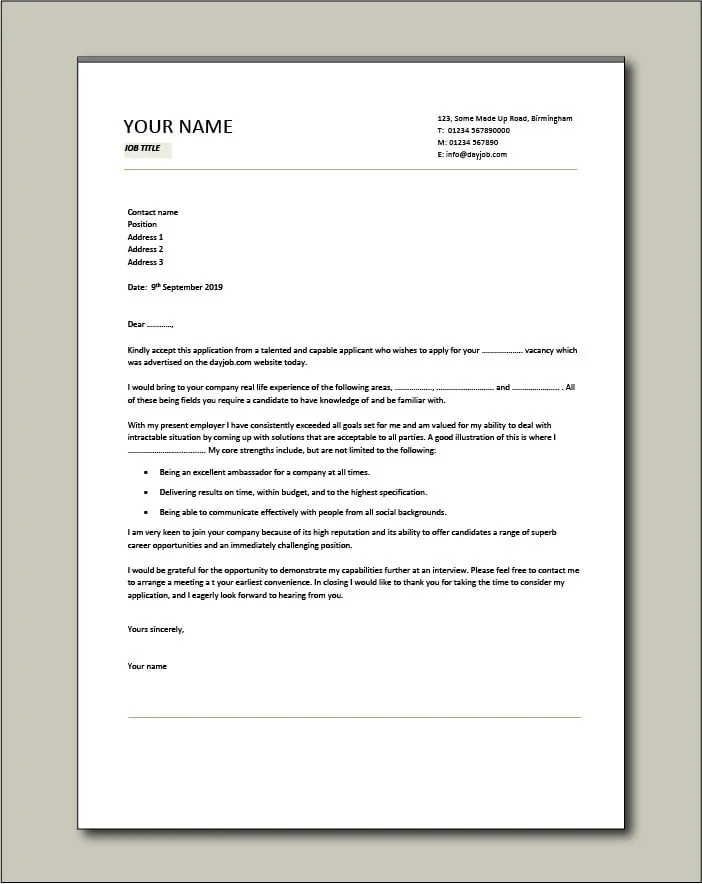What is a Cover Letter?
A cover letter is a crucial document that accompanies your resume when applying for a job. It serves as your introduction to the hiring manager, providing a personalized overview of your qualifications, skills, and experiences. Unlike a resume, which is a factual summary of your work history, a cover letter allows you to express your personality, demonstrate your enthusiasm for the role, and highlight how your background aligns with the specific requirements of the position. Think of it as your first chance to make a positive impression and convince the employer that you are a strong candidate worthy of an interview. It’s your opportunity to make a compelling case for why you are the right fit for the job. It’s not just a summary of your resume; it’s a chance to tell your story and show why you are uniquely qualified.
Why is a Cover Letter Important?
In today’s competitive job market, a well-crafted cover letter is essential. It gives you the chance to differentiate yourself from other applicants. It allows you to showcase your personality, communication skills, and genuine interest in the company and the specific role. Many hiring managers consider a cover letter to be a vital part of the application process. It shows that you’ve taken the time to research the company and understand the job requirements. A cover letter can highlight experiences and skills that might not be as obvious in your resume, and can also explain any gaps in your employment history or career transitions. A strong cover letter significantly increases your chances of getting noticed and securing an interview.
Key Components of a Cover Letter
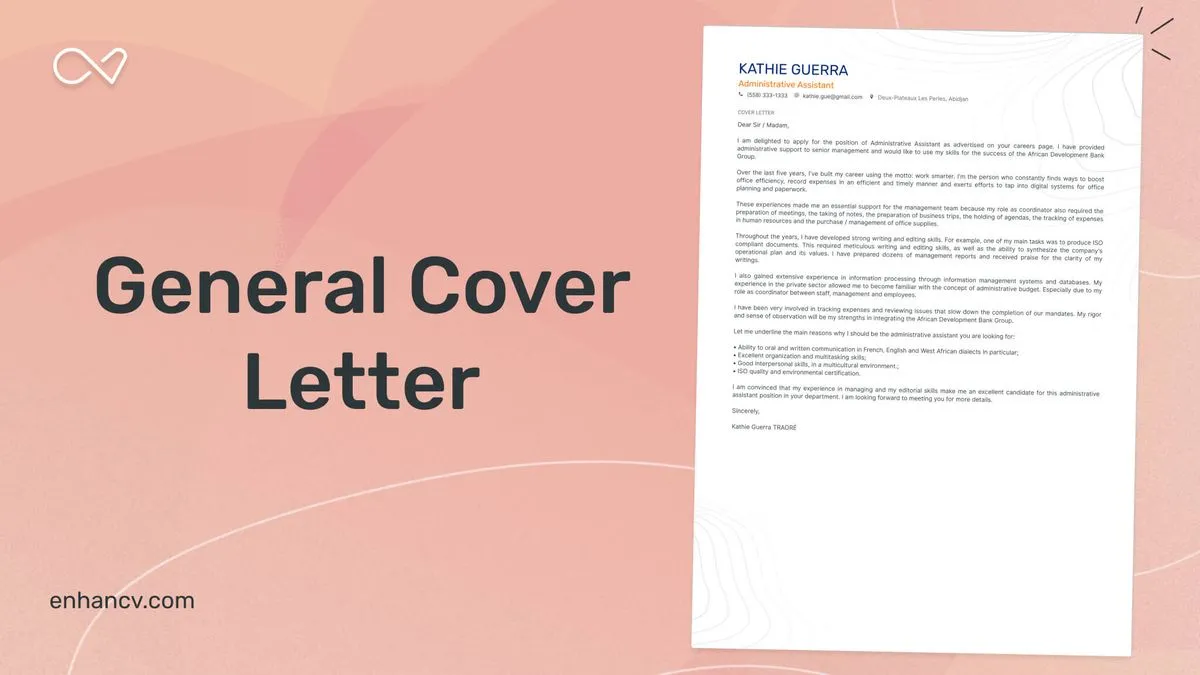
A cover letter typically includes several key components, each serving a specific purpose. These elements work together to create a cohesive and persuasive document that captures the reader’s attention and makes a strong case for your candidacy. Understanding these components is essential for writing an effective cover letter. The essential parts include contact information, date, the hiring manager’s name and title, salutation, an opening paragraph, the body (expressing interest, highlighting skills, and addressing the company’s needs), and a closing paragraph. Each section plays a vital role in conveying your message, demonstrating your qualifications, and persuading the employer to consider your application.
Contact Information
At the top of your cover letter, include your contact information. This should include your full name, phone number, email address, and optionally, your LinkedIn profile URL. Ensure that the contact information is accurate and up-to-date. Make it easy for the hiring manager to reach you if they want to learn more about your qualifications. This section is usually aligned to the left or right of the page. The consistency of using a professional and easily accessible email address is important.
Date
Below your contact information, include the date you are writing the cover letter. This helps the hiring manager understand when you submitted the application. The format of the date should be consistent with the standard in your region (e.g., Month Day, Year or Day Month, Year). This is a small detail, but it contributes to the overall professional appearance of your application materials.
Hiring Manager’s Name & Title
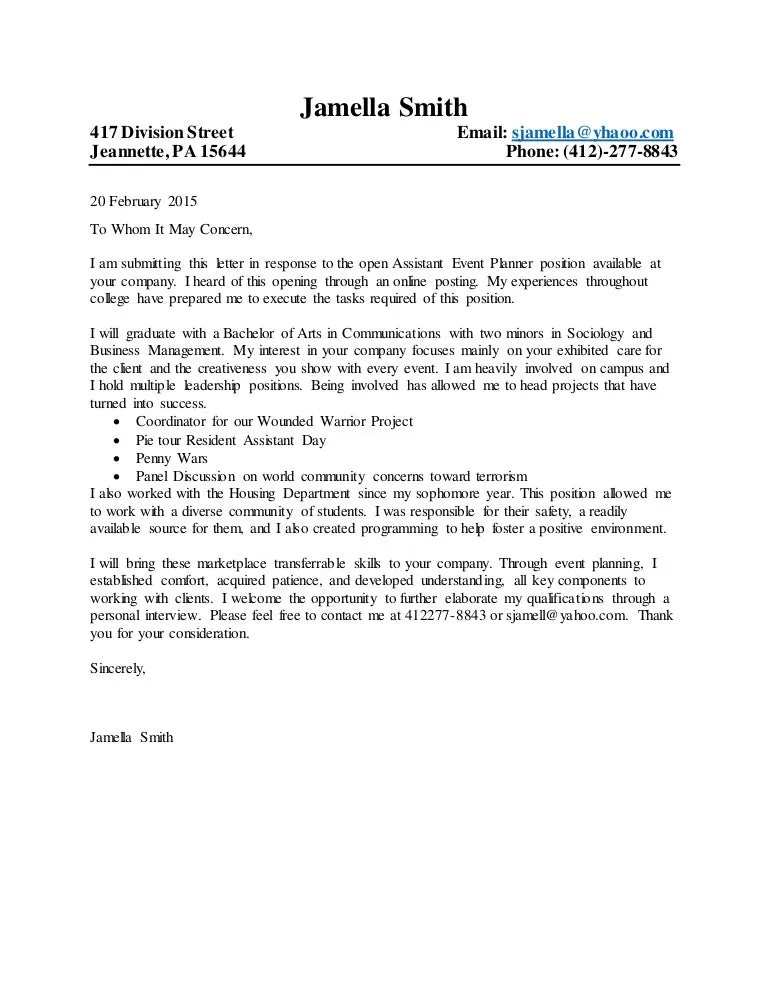
If possible, address your cover letter to a specific person. Research the hiring manager’s name and title. This personalized touch shows that you’ve put in the effort to learn more about the company and the specific role. If you can’t find the hiring manager’s name, you can use a generic salutation like ‘Dear Hiring Manager’ or ‘Dear [Department Name] Hiring Team.’ Using a name is best, however, as it demonstrates your attention to detail and your genuine interest in the position.
Salutation
Use a professional salutation. ‘Dear Mr./Ms./Mx. [Last Name]’ is a standard and respectful way to start your letter. If you don’t know the hiring manager’s name, use a formal alternative such as ‘Dear Hiring Manager’ or ‘To Whom It May Concern.’ Avoid overly casual greetings such as ‘Hi’ or ‘Hello.’ The salutation sets the tone for your letter and should reflect a professional approach to the application process.
Opening Paragraph
The opening paragraph is your chance to grab the reader’s attention. State the position you’re applying for and where you saw the job posting. Briefly mention why you are interested in the role and the company. This paragraph should be concise and engaging. It should provide a clear purpose for your letter and entice the reader to continue reading. A strong opening makes a positive first impression and sets the stage for the rest of your cover letter.
Expressing Interest
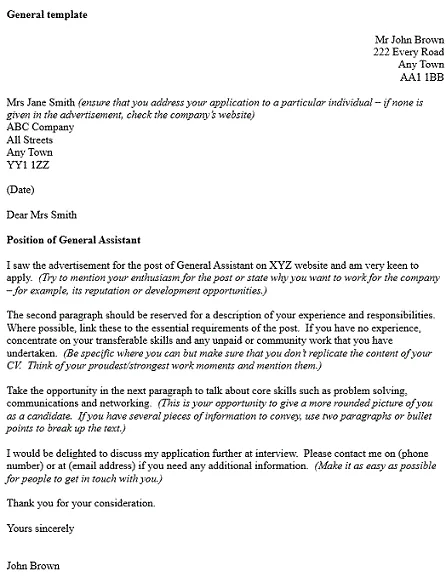
Clearly express your interest in the specific role and the company. Explain what excites you about the opportunity and what draws you to the organization. Do some research on the company to demonstrate your genuine interest. Show that you have considered the company’s values and mission. This shows your intention to contribute to the company’s growth.
Highlighting Skills and Experience
This is the most important section, where you showcase your relevant skills and experience. Review the job description carefully and identify the key requirements. Then, provide specific examples from your work history or other experiences that demonstrate you possess those skills. Tailor your examples to match the requirements of the job. Show, don’t just tell; use specific situations to prove your capabilities. This is where you connect your abilities with the needs of the job.
Tailoring to the Job Description
Customize your cover letter for each job application. Don’t send out a generic template. Carefully read the job description and identify the specific skills, qualifications, and experiences the employer is seeking. Use the same keywords and phrases from the job description in your cover letter. This helps the hiring manager see that you have what they are looking for. Your cover letter shows that you understand the requirements of the role and that you are the perfect fit.
Provide specific examples and achievements
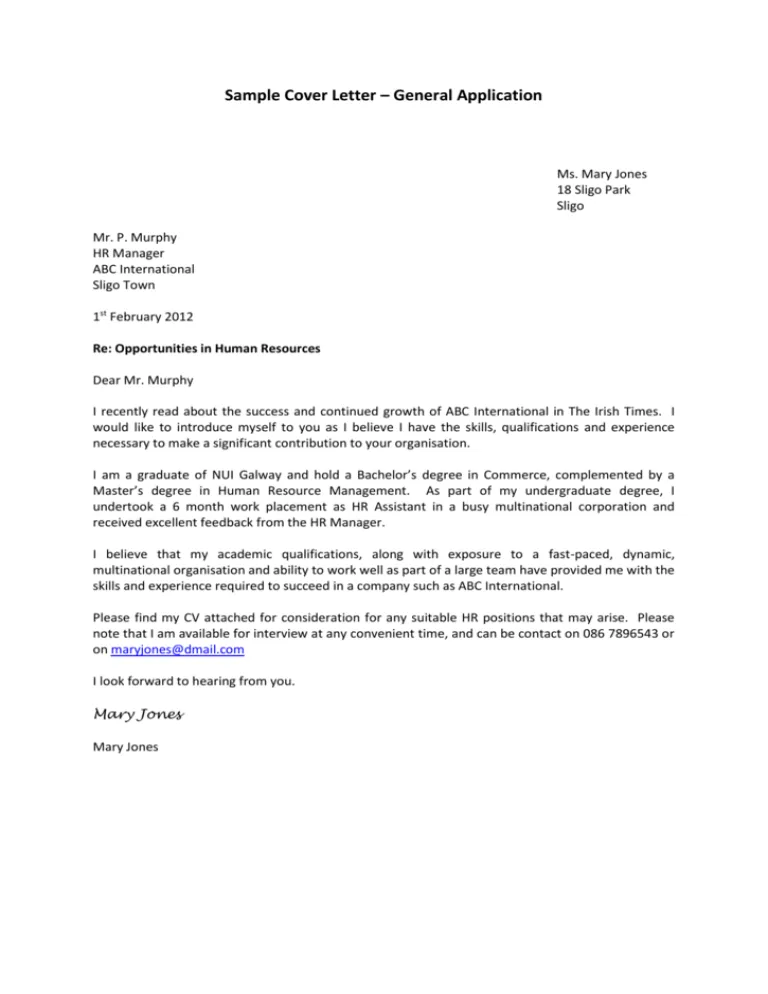
Instead of simply listing your skills, provide concrete examples of how you have used those skills to achieve results. Use the STAR method (Situation, Task, Action, Result) to structure your examples. Briefly describe the situation, the task you faced, the action you took, and the positive result you achieved. Quantify your accomplishments whenever possible. This method makes your claims more credible and demonstrates your impact in previous roles. Providing specific instances of success makes your cover letter more persuasive.
Quantify Accomplishments
Whenever possible, quantify your achievements. Use numbers, percentages, and data to demonstrate the impact of your work. For example, instead of saying ‘Improved sales,’ say ‘Increased sales by 15% in one quarter.’ Quantifying your achievements gives the hiring manager a clear picture of your value and makes it easier for them to assess your abilities. Metrics are crucial for making a powerful case for your candidacy.
Addressing the Company’s Needs
Demonstrate your understanding of the company’s needs and how your skills and experience align with those needs. Research the company’s mission, values, and recent projects. Show that you understand the challenges the company faces. By addressing their needs, you demonstrate that you are thinking strategically and that you are not just looking for a job; you want to contribute to the company’s success. This shows you’ve done your homework and are prepared to make a meaningful contribution.
Closing Paragraph
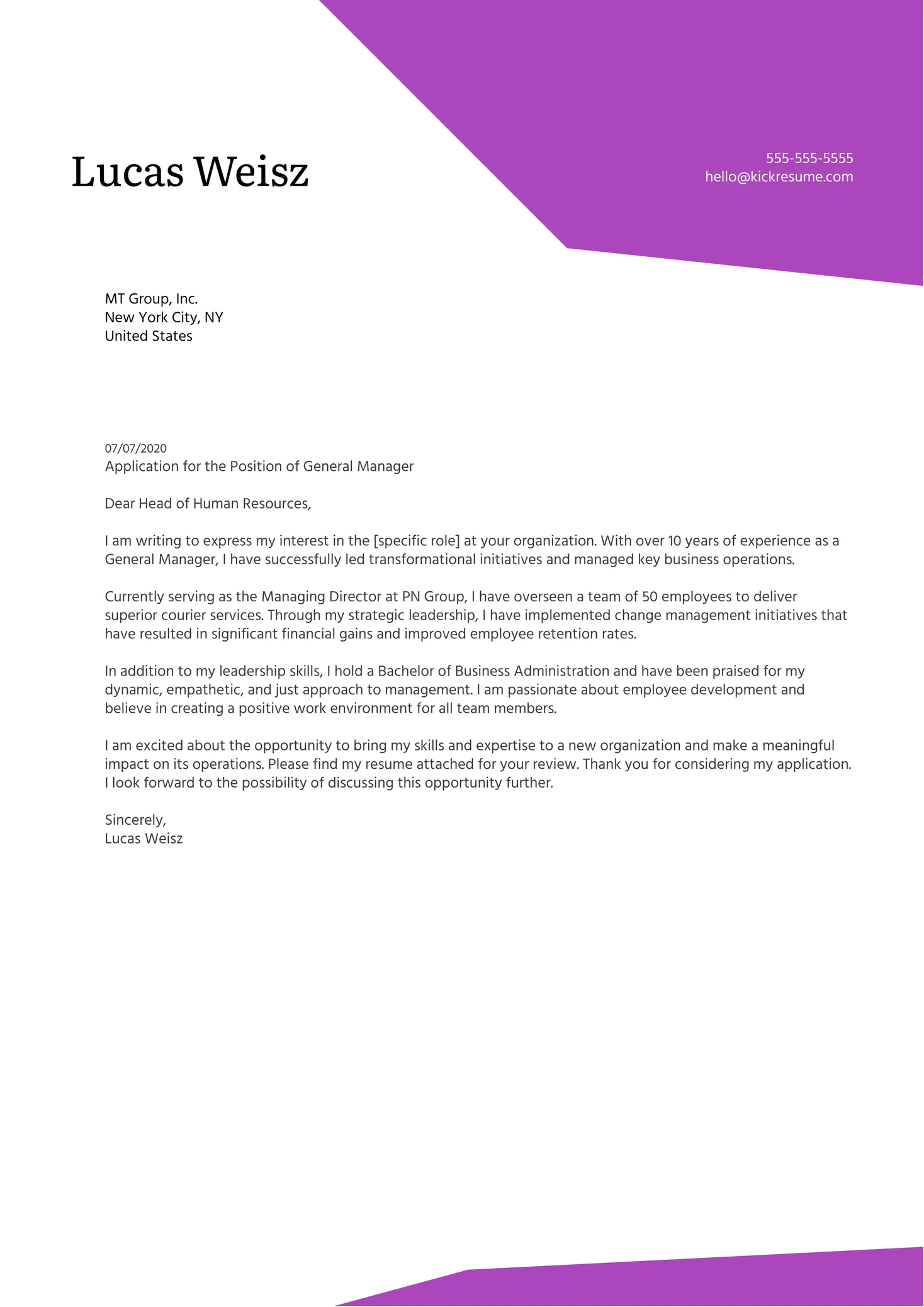
The closing paragraph should reiterate your interest in the position and thank the hiring manager for their time and consideration. Reiterate that your qualifications are a strong match for the job, and show excitement about the possibility of moving forward in the hiring process. End on a positive and confident note. This is your last chance to leave a lasting impression.
Reiterate Interest
Briefly restate your enthusiasm for the role and the company. Remind the hiring manager why you are a strong candidate. Reiterate key skills or experiences that make you a good fit for the position. This helps reinforce your main points and leaves a positive and memorable impression. This is your final opportunity to highlight your keen interest in the opportunity.
Call to Action
Include a clear call to action. Express your interest in an interview and let the hiring manager know you are available. Provide your contact information again, just in case. This makes it easy for the hiring manager to take the next step in the process. Make sure your call to action is polite and professional. Include a brief sentence to show your enthusiasm.
Formal Closing
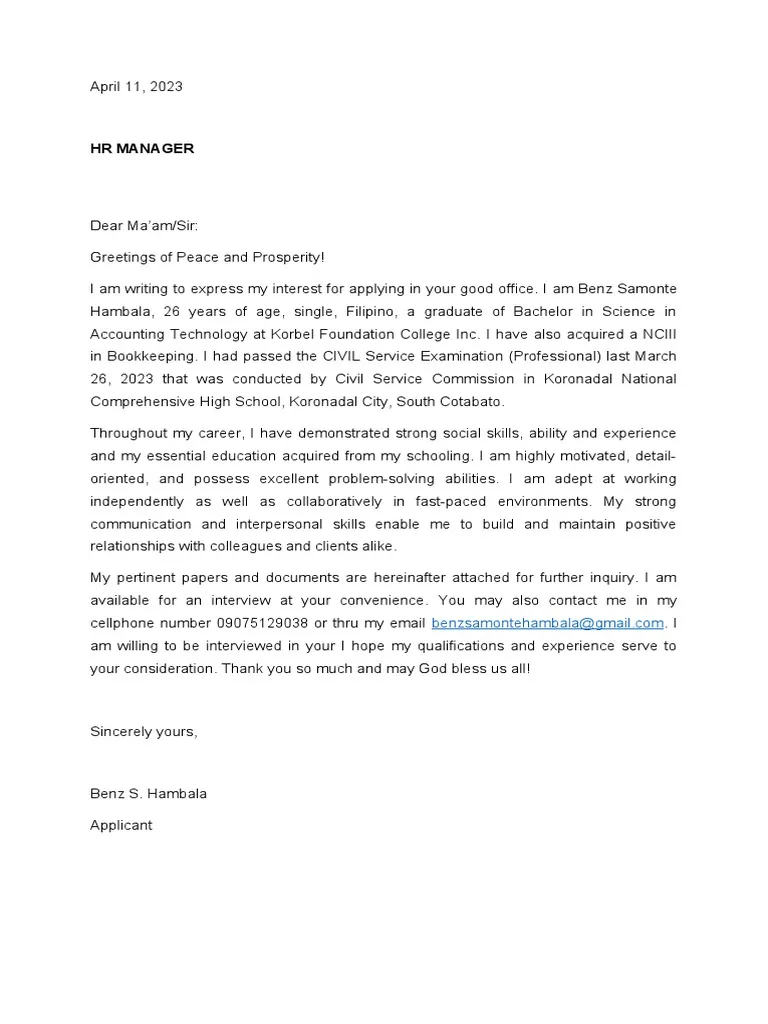
End your cover letter with a professional closing such as ‘Sincerely,’ ‘Regards,’ or ‘Best regards.’ Follow this with your typed name. If you are submitting a physical copy, leave space for your signature above your typed name. The formal closing demonstrates respect and professionalism. It concludes the document on a positive note.
Formatting and Design
The formatting and design of your cover letter are important for readability and professionalism. Ensure that your cover letter is visually appealing and easy to read. It should be well-organized, with clear sections and a consistent style. Proper formatting enhances the reader’s experience and makes your cover letter more impactful. Use a clean, professional format that is appropriate for the industry.
Font Choice and Size
Choose a professional and readable font. Common fonts include Times New Roman, Arial, Calibri, and Helvetica. Use a font size between 10 and 12 points for the body of your letter. Ensure that the font is consistent throughout the document. Avoid using overly fancy or stylized fonts that might be difficult to read. This contributes to a polished and professional look.
Spacing and Layout
Use standard margins (1 inch on all sides). Use single spacing within paragraphs and double spacing between paragraphs. Align your text to the left. Do not use excessive bolding, italics, or underlining. Make sure your cover letter looks clean and well-organized. Good spacing and layout make your cover letter easier to read and visually appealing.
Proofreading and Editing
Proofread your cover letter carefully for any errors in grammar, spelling, and punctuation. Have someone else read it over as well. A single mistake can create a negative impression and undermine your credibility. Proofreading is essential to ensure your professionalism and attention to detail. Pay close attention to the details, as they make a big difference.
Common Mistakes to Avoid
Avoid common mistakes to ensure your cover letter is effective. These errors can negatively impact your chances of getting hired. Recognizing and correcting these issues can dramatically improve your cover letter’s overall effectiveness. Addressing these common pitfalls will help you make a stronger first impression.
Typos and Grammatical Errors
Typos and grammatical errors can damage your credibility. Proofread your cover letter carefully to catch any mistakes. Use a grammar checker to identify potential errors. Review it multiple times. Ensure that your writing is clear, concise, and error-free. Errors indicate a lack of attention to detail and can prevent you from getting an interview.
Generic Language
Avoid using generic phrases that could apply to any job. Tailor your language to the specific job and company. Provide specific examples and quantify your achievements. Generic language shows a lack of effort and does not highlight what makes you unique. Personalized content demonstrates you put in the time and effort to align with the job requirements.
Lack of Customization
Do not use a generic cover letter template for every job application. Customize your cover letter for each position. Research the company and the job requirements. Show that you understand the company’s values and needs. Lack of customization demonstrates a lack of interest in the specific role and shows a lack of understanding of the job requirements.
Ignoring the Job Description
Always refer to the job description when writing your cover letter. Identify the key skills and experiences the employer is seeking. Use the same keywords and phrases from the job description in your letter. Tailoring your letter to the job description helps demonstrate that you are a great fit. Ignoring the job description indicates you haven’t thoroughly reviewed the requirements and needs.
Length of the Cover Letter
Keep your cover letter concise and to the point. Aim for a length of one page. Avoid rambling or including unnecessary information. Be clear and focused on the most important points. Recruiters have limited time and will be put off by long, wordy cover letters. Focus on what is essential.
Best Practices for Different Industries
While the fundamental principles of cover letter writing remain the same, there may be some differences in style and content depending on the industry. Research the best practices for your specific field. Tailor your cover letter accordingly to ensure it is appropriate for your industry and showcases your qualifications in the most effective way. The goal is to adapt your approach to fit the industry standards and capture the attention of the hiring managers.
Example Cover Letter for General Application
Here is an example cover letter to use as a reference. Remember to customize it to match your specific experience and the job you are applying for. Use this example as a guide to help you create a compelling cover letter that highlights your qualifications and showcases your interest in the role. Adapting the structure of this example will make it easier to develop a highly effective cover letter.
